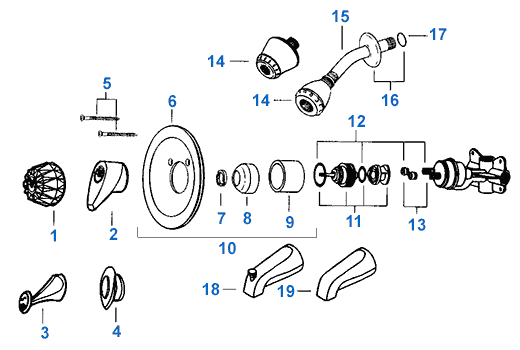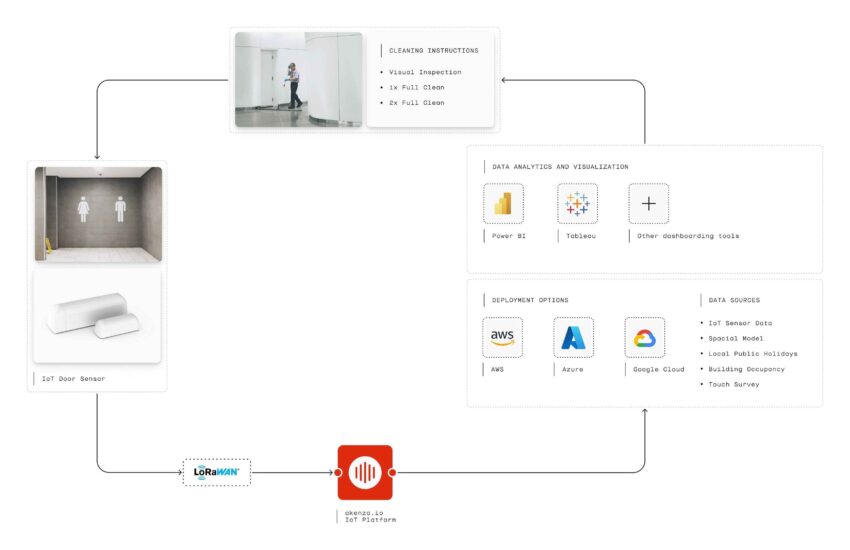How do you replace a single-handle bathtub faucet? With 7 Easy Tips
So let’s see How do you replace a single-handle bathtub faucet:
firstly there are three basic types of bathroom plumbing fixtures that require screwdriver-level repair skills:
Bathtubs and shower pans, sinks, and toilets.
A leaking wall-hung water closet can be tough to fix; learning how to remove a toilet from the floor is more than most homeowners want to know. But learning how to replace a leaky bathtub faucet or even a faulty showerhead is not as complicated as you might think.
Two Handle Bathtub faucets are straightforward once you know which part controls the water temperature and which one controls the volume (some control both). The process looks complicated at first glance because it usually involves.

What makes the bathtub different from other plumbing fixtures is that you have to deal with a cast-iron fixture, unlike sinks and toilets.
To remove the old faucet:
1) Remove all the bathroom accessories such as the soap dish, toothbrush holder, and showerhead if there’s one. In this instance, we’re only replacing the faucet, so we don’t have to go too far or deep into the workings of our tub.
2) Use a wrench/spanner set that matches your drain stopper nut size (usually 1/2″) to loosen it up – just enough to rotate freely about 30 degrees in either direction without moving any further than that. You don’t want it loosened up so much that it falls off.
/bathtub-drain-stopper-types-2718995_FINAL-3c520aa60ba2477786c0a2b64de3834f-3f86776780154b1aad5a91124256e317.png)
3) Now that the stopper is loosened up, use a putty knife or similar tool to scrape out the caulk from around the faucet and loosened drain stopper. Clean any debris away (there shouldn’t be too much of anything).
4) With your wrench/spanner still in hand, loosen the nuts on either side immediately surrounding the old faucet (the ones attached directly to the shower base).
The reason we’re doing this first is that when you disconnect the main water supply lines, you want them to be able to breathe freely without being restricted by any metal objects whatsoever – that’s why they have “K” or “L”-shaped connectors as opposed to normal garden-variety elbows.
5) Once the nuts are loose, use your putty knife (or similar tool) to loosen up any remaining caulk near where the showerhead meets the faucet body. Clean off any debris build-up and use a flashlight to inspect the connections for leaks or other signs of neglect – it’s best to take your time with this to avoid mistakes.
In some cases, you will be able to see copper pipe connectors that can be unscrewed by hand; if there’s more than one, then, by all means, do so (in fact, permanently remove as much hardware as possible without using tools – that way you are less likely to mar anything irreparably).
6) Now that everything is loose and ready to come off, it’s time to disconnect the water supply pipes. We’re not going into detail on how to do this because there are so many different kinds of faucets:
Some have short connectors that can be pulled off by hand; others have “K” or “L”-shaped connectors that must be unscrewed with a wrench; still, others have plastic handles that must be either pushed-pulled in order for the connector(s) to snap out.

Thus you will need to use your best judgment on how to proceed from here (but don’t worry – we’ll show you photos of exactly what needs doing if your particular setup does not appear identical to ours).
7) Once you’ve gotten around to getting the water supply lines off, loosen up the nut/bolt across from (and a little below) where the showerhead meets the faucet. Use your hand to pull upwards on the showerhead in order to force any remaining water out of it while you do this (be sure not to damage anything when you’re doing so).
8) Now that everything is disconnected, you can safely remove all parts of the old faucet – but make sure not to accidentally turn them sideways or upside down as they have a tendency to fall apart at this point if they haven’t been taken care of properly. Just set each piece into some bucket or container that will protect it from falling onto the ceramic tile and causing further problems until after you’ve completed the necessary installation of your new faucet.
9) Take the time to clean every part of it with some disinfectant wipe and then set them aside so you can begin installing your new one. Be sure to clean up any debris or leftover caulk that might get in the way of proper connection later on.
10) Now that everything is ready, you’ll want to thread all the water supply lines onto their respective connections (if they are not already attached). Then place each piece into its corresponding hole/junction at least as far as whatever grooves there are allow you to do so by hand (don’t worry if a few parts don’t go entirely inside – make sure they’re sitting in). You can now tighten up the nuts/bolts as much as possible by hand.
11) It’s now time to install the new faucet. You first want to connect your water supply lines to this new component and then thread it into place using your sink wrench (or similar tool). Be careful not to screw it on too far, or you might bust open the ceramic surrounding where it connects with the drainpipe – if that happens, you’ll have no choice but to make a trip back down to your local hardware store another one. Just use small movements at a time as you workaround until it’s finally snugly attached.
12) Now that everything is set into place reverse steps 7-9 to reattach your water supply lines and tighten up the final nut/bolt.
13) Test for leaks by making sure everything is reconnected properly and then start up some water flow via a nearby faucet at a slow pace until you feel confident that it’s not leaking anywhere.
14) Once you’ve confirmed there are no more problems, you can finish cleaning up any messes or debris and then screw on the new showerhead in its proper place (you might also want to apply a dab of caulk to fill in any gaps that may occur between it and the ceramic). Ensure to clean off any excess caulk so it doesn’t get left behind when you’re finished. That’s all there is to it!
How do you replace a single-handle bathtub faucet? – Additional Tips/Tricks
1) You can find instructions for how to do this on the web, but it’s sometimes hard to visualize just what you need to do, so we’ll be showing a few photos of us replacing our faucet to give you an idea of precisely what should happen.
2) We recommend that you wear gloves while doing this project and try not to get any water inside your mouth as some of the parts have been known to contain lead or other harmful substances that might leech into the water during or after use (always check with your local hardware store if there are any doubts regarding health risks).
3) If possible, lay down some protective paper underneath wherever you’re going to be working to make sure you don’t accidentally scratch up your ceramic/marble.
4) Some sinks might have a separate tube from the faucet that connects directly into the drainpipe (if this is not the case, it might be behind the actual faucet). If there’s at least an inch or so visible after removing everything else, you can pull it out and attach the new one.

5) Remember to clean any leftover caulk off when you’re finished and apply some fresh stuff if needed – but always read your instructions first!
6) For those interested in green solutions for their bathroom, silicone tape is a great product to use during installation as long as it’s been adequately patched together beforehand (otherwise, you might have leaks).
7) Feel free to tackle this project yourself and leave a comment if you know of a way to make it easier or more efficient. We may even include your suggested improvements in future versions of this guide. And don’t forget to check out our other informative guides on how to replace your toilet seat or fix a leaky faucet.
Natasha is the owner of Smart Home Bath, a company that specializes in providing innovative and convenient home automation solutions. With a background in electrical engineering and a passion for making life easier through technology,
Natasha founded Smart Home Bath to help homeowners upgrade their living spaces and improve their daily routines.
Over the years, Natasha has become an expert in the field of smart home technology, and her company has grown to be a trusted source of high-quality products and expert installation services.
Whether you're looking to add voice-controlled lighting, automated temperature control, or any other smart home feature, Natasha and her team at Smart Home Bath have the knowledge and expertise to help you get the most out of your home automation system.
So, if you want to make your home smarter, Natasha and Smart Home Bath are the perfect people to turn to.
Last update on 2023-06-29 at 08:28 / Affiliate links / Images from Amazon Product Advertising API





3 thoughts on “How do you replace a single-handle bathtub faucet? With 7 Easy Tips”